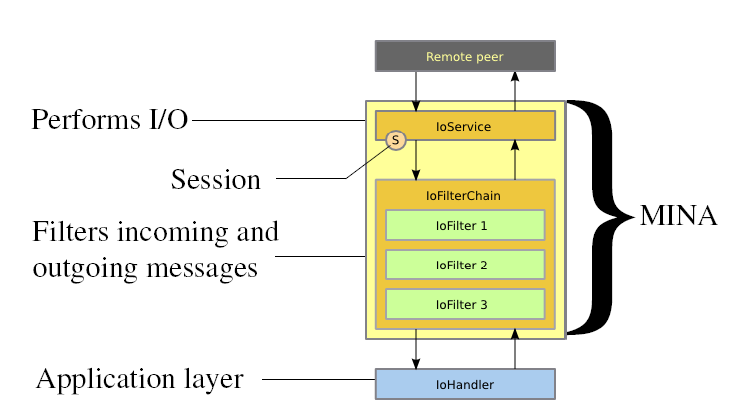2.1 - MINA based Application Architecture
It’s the question most asked: ‘How does a MINA based application look like’? In this article lets see what’s the architecture of MINA based application. Have tried to gather the information from presentations based on MINA.
A Bird’s Eye View:

Here, we can see that MINA is the glue between your application (be it a client or a server) and the underlying network layer, which can be based on TCP, UDP, in-VM communication or even a RS-232C serial protocol for a client.
You just have to design your application on top of MINA without having to handle all the complexity of the network layer.
Lets take a deeper dive into the details now. The following image shows a bit more the internal of MINA, and what are each of the MINA components doing:

(The image is from Emmanuel Lécharny presentation MINA in real life (ApacheCon EU 2009))
Broadly, MINA based applications are divided into 3 layers
- I/O Service - Performs actual I/O
- I/O Filter Chain - Filters/Transforms bytes into desired Data Structures and vice-versa
- I/O Handler - Here resides the actual business logic
So, in order to create a MINA based Application, you have to:
- Create an I/O service - Choose from already available Services (Acceptor) or create your own
- Create a Filter Chain - Choose from already existing Filters or create a custom Filter for transforming request/response
- Create an I/O Handler - Write business logic, on handling different messages
This is pretty much it.
You can get a bit deeper by reading those two pages:
Of course, MINA offers more than just that, and you will probably have to take care of many other aspects, like the messages encoding/decoding, the network configuration how to scale up, etc… We will have a further look at those aspects in the next chapters.